The history of barbering
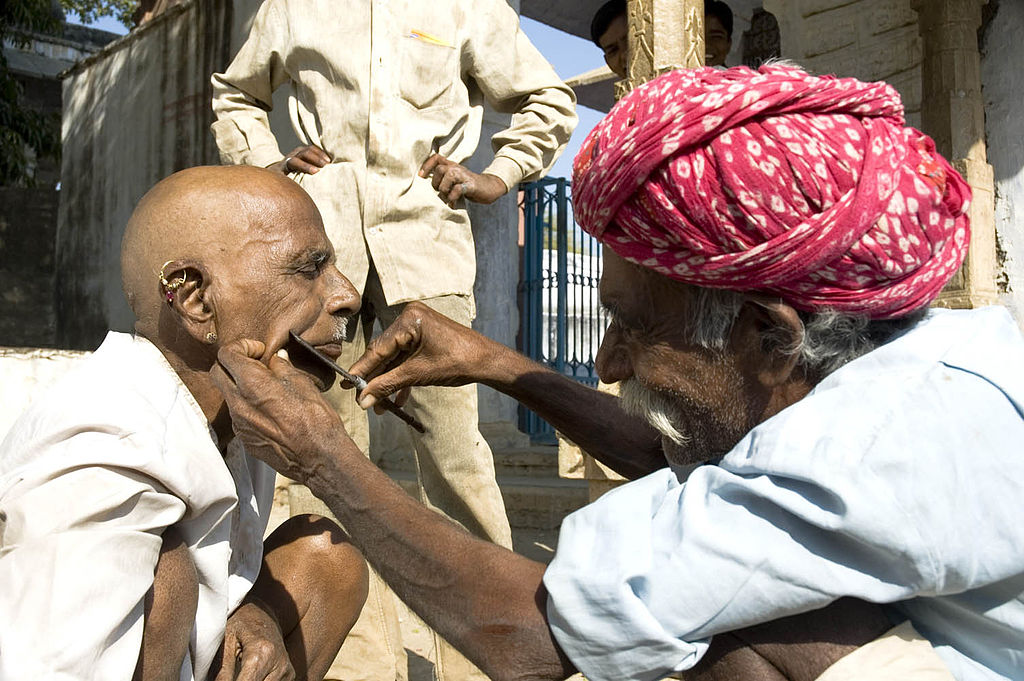
We’re all familiar with the term ‘barber’ and hopefully recognise it’s a person whose occupation is mainly to cut, groom, style and shave men’s hair. A barber's place of work is known as a ‘barber shop’ or more commonly the ‘barber's’.
The actual word comes from the Latin ‘barba’, meaning ‘beard’.
Seems pretty straightforward doesn’t it….
just a place to get a haircut!
However the history of ‘barbering’ is far from straightforward!
 Early Tribes
Early Tribes
Earliest records go back to primitive man where the foremost men of their tribe were medicine men and priests – who were also the ‘barbers’. The early tribes were very superstitious and believed that both good and bad spirits entered the body through the hairs on the head and the bad spirits could only be driven out by cutting the hair. Different tribes developed different styles of haircut.
In tribal times the barbers became the chief figures in religious ceremonies, where elaborate rituals included dances where the long hair hung loose and afterwards the hair was cut, then held back tightly in order that the good spirits couldn’t get out and no evil spirits could get back in. Early razor blades have been found dating back to the Bronze Ages!
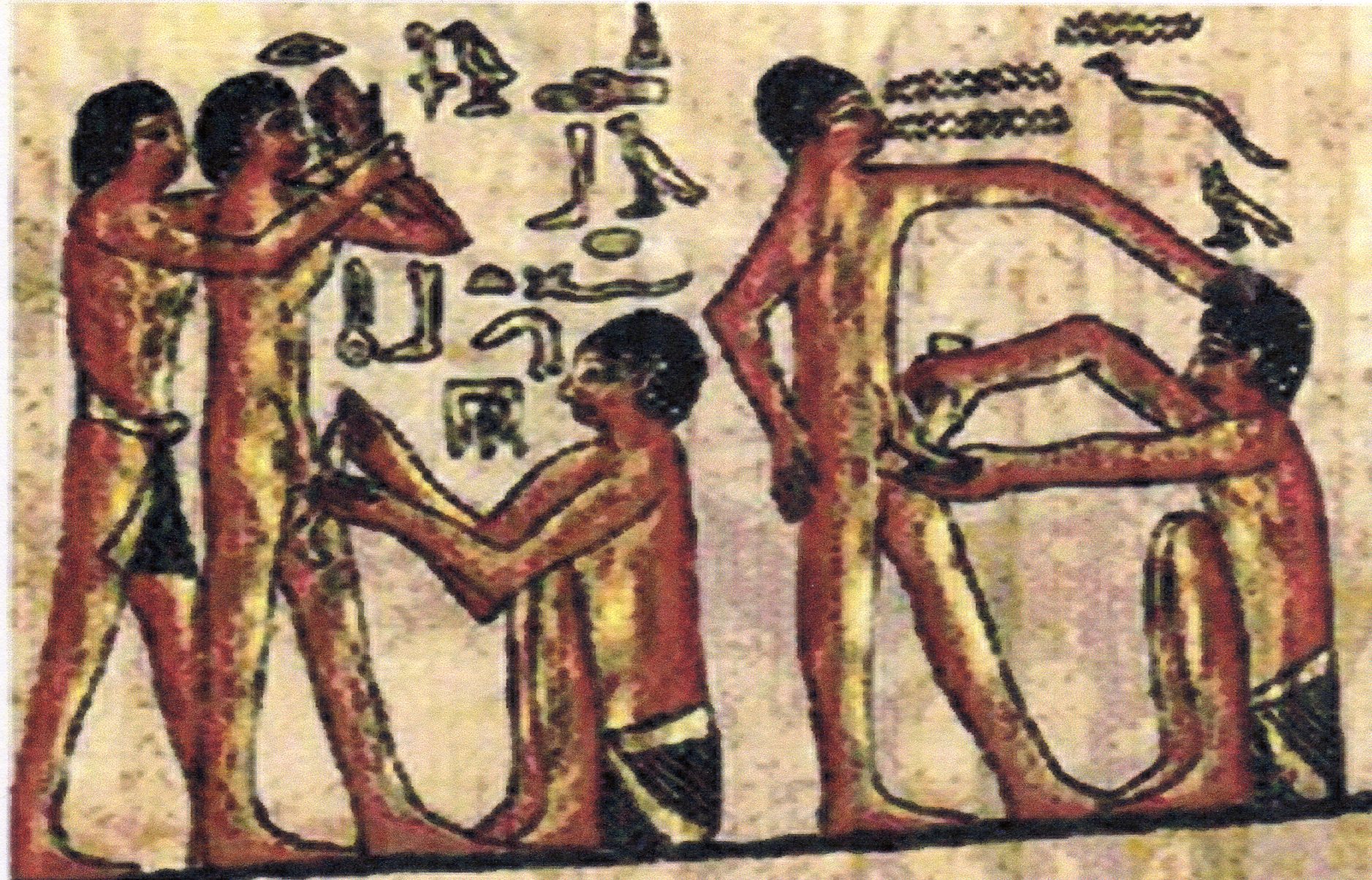 Ancient Egypt
Ancient Egypt
Ancient monuments and papyrus show that the early Egyptians were extremely fussy about hair and held lots of superstitions around it. Lots illustrate men being shaved, and the priests were ‘de-haired’ every few days. Even Joseph was described as being shaved before seeing the Pharaoh so he didn’t have a ‘dirty face’
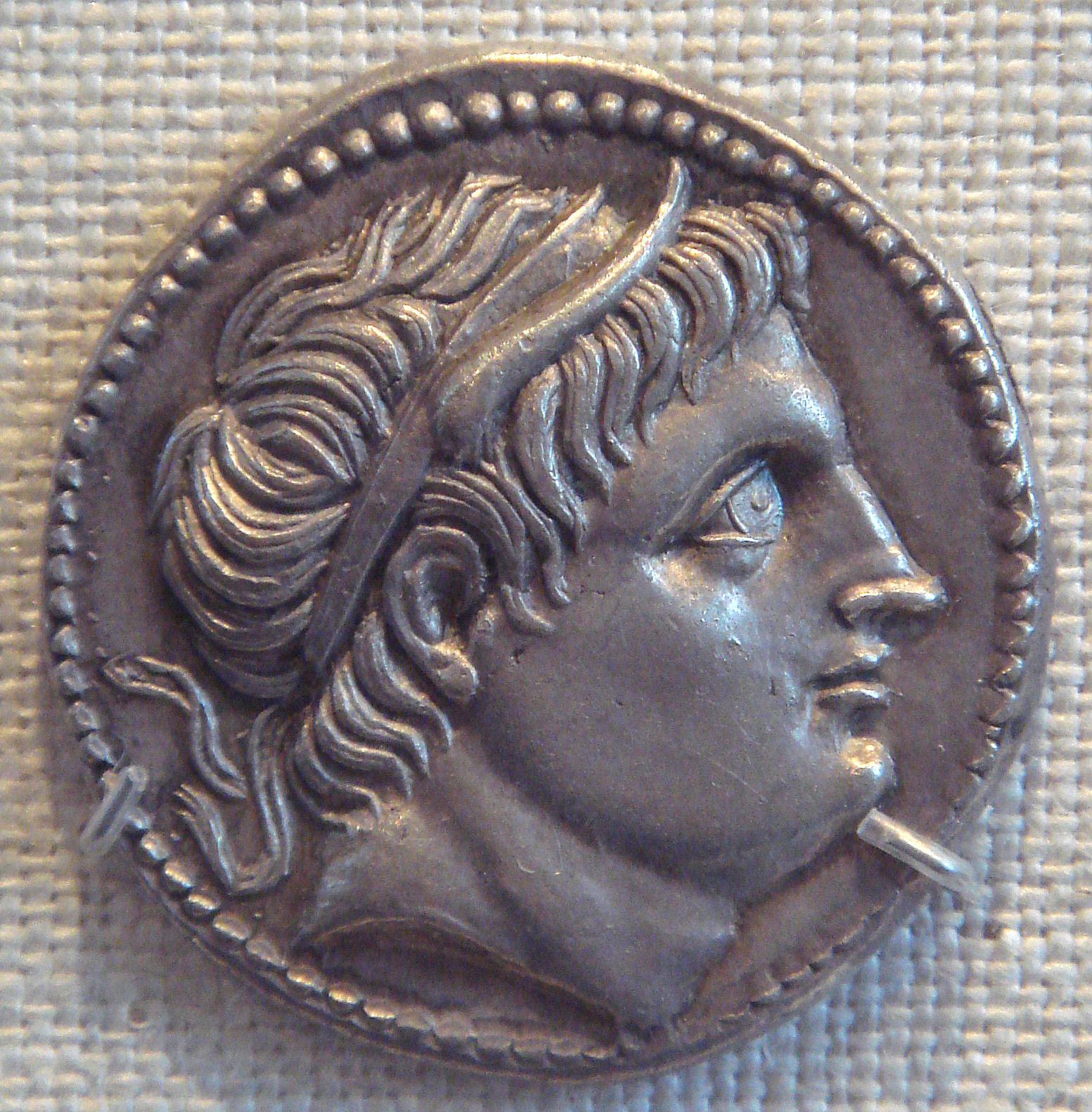
Romans and Greeks and Persians
Romans had barbers since 296 BC, when Ticinius Mensa came from Sicily bring the art of shaving with him. Here they set the trend of ‘barbers’ being the place to meet, socialize and gossip much as they are today. The absence of beards actually set apart ‘Free’ men from the slaves. Barbers in Greece have continued to have an important role in society since the 5th century BC where they have been fastidious about facial hair.
The Persians are said to have beaten Alexander the Great’s men because they had beards! The Persians could grab the Macedonians' beards, pulling them to the ground and spearing them. Later Alexander ordered all his army to shave!
See it’s not just your partner who complains about your stubble!
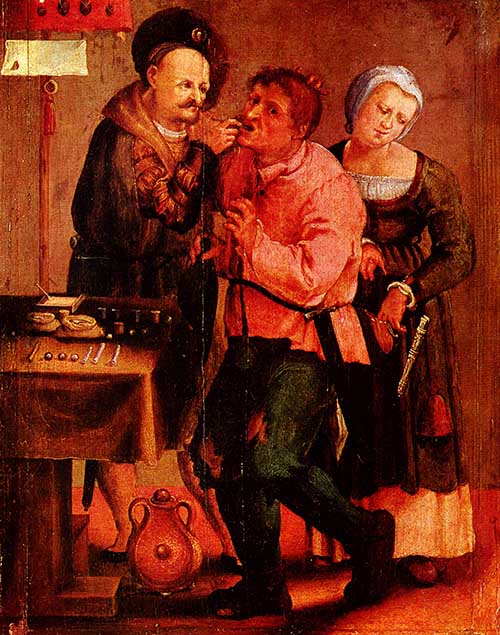
Middle Ages
In the Middle Ages barbers were not only cutting hair and shaving, but also pulling teeth, dressing wounds and performing simple operations. These barber-surgeons actually formed their first organisation in France in 1096, after the archbishop of Rouen prohibited the wearing of beards!
It was later that the split of these combined roles of barbers and surgeons was sought. In 1210 in Paris they identified the academic surgeons as surgeons by their long robes and the barber surgeons in short robes.
In 1308 the world’s oldest barber organisation was founded in England-still known in London as the ’Worshipful Company of barbers’. It wasn’t until 1462 that Edward IV chartered barbers as a guild called the ‘Company of Barbers&rsquo$$ the surgeons established their own guild 30 years later.
However these two guilds were merged again by statute of Henry VIII in 1540, as the ‘United Barber-Surgeons Company’, but they were still differentiated: barbers displayed blue and white poles, and were forbidden to carry out surgery except for teeth-pulling and bloodletting; surgeons displayed red and white-striped poles, and were not allowed to shave people or cut their hair. In 1745 George II passed several acts to separate surgeons from barbers. The ‘Masters, Governors and Commonalty of the Honorable Society of the Surgeons’ were formed in London, but in 1800 during the reign of George III it was replaced by the ‘Royal College of Surgeons’.
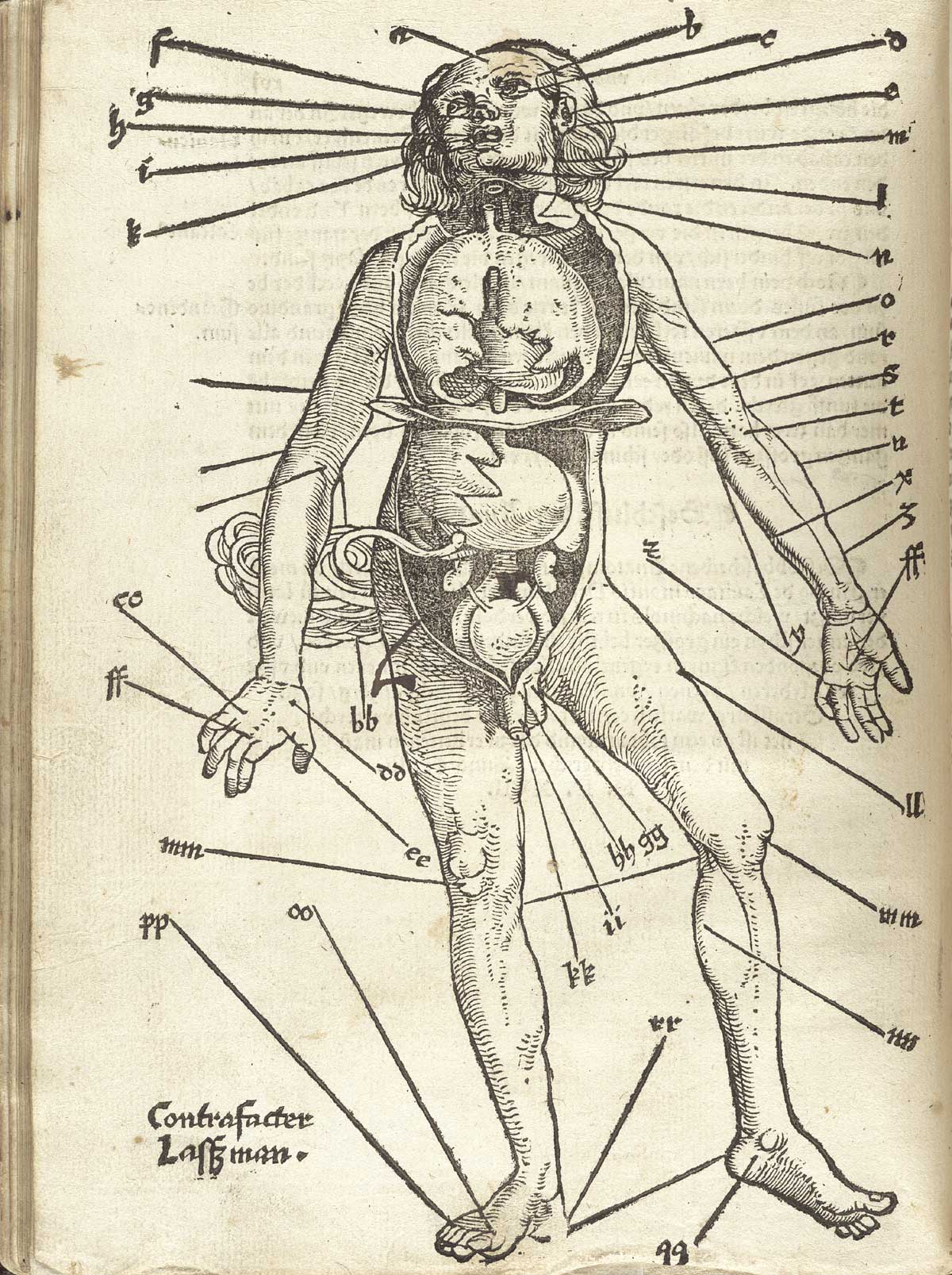
Bloodletting
Up until the 18th century the barber-surgeons duties consisted of not only cutting hair and shaving, but picking out lice from hair, pulling rotten teeth, lancing abscesses, setting bone fractures and very often ‘bloodletting’.
‘Bloodletting' was an important practice, as it was believed that as a person ate and digested food it was turned into blood and if a person had an excess of blood, all sorts of ailments would follow, and so it was felt ‘bloodletting' would help. Many physicians thought this cutter’s art beneath them so left it to the barbers.
These barber-surgeons just like other craftsmen needed to advertise their services and in Medieval London placed bowls of blood in their windows, to remind passers-by they may be overdue for their own ‘bloodletting’! But these bowls of blood congealed and putrefied and eventually a law was passed banning the practice of leaving blood in the windows. This caused a problem – where to dispose of the blood? Why easy – throw it in the Thames!!!!
The barber-surgeons still needed somehow to advertise and that when the barber’s pole became the recognised symbol.
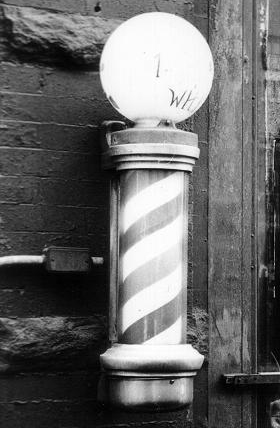
The Barber's Pole
The barber-surgeon's pole actually originated from the rod that the poor patient grasped in order to make their veins bulge – this made it easier to cut or slice open. The brass ball at the top represented the basin that was used to collect the blood. The red and white stripes symbolised the blood soaked bandages, which would be washed then hung to dry on the rod outside the shop. The bandages would often twist in the wind, and this forms the spiral pattern we see on the barber poles of today.
In 1540, the law required barbers and surgeons to distinguish their services by the colours of their pole: Barbers used blue and white poles, while surgeons used red and white poles. (Today, in the States red, white and blue barber poles are often found, although this may have more to do with the colours of the nation's flag - some say it goes back to the red representing arterial blood, the blue represents venous blood and the white represents the bandages.) When the barber poles are spinning the red stripes are meant to move in a direction that makes the red (arterial blood) seem as if it is flowing downwards, as it does in the body.
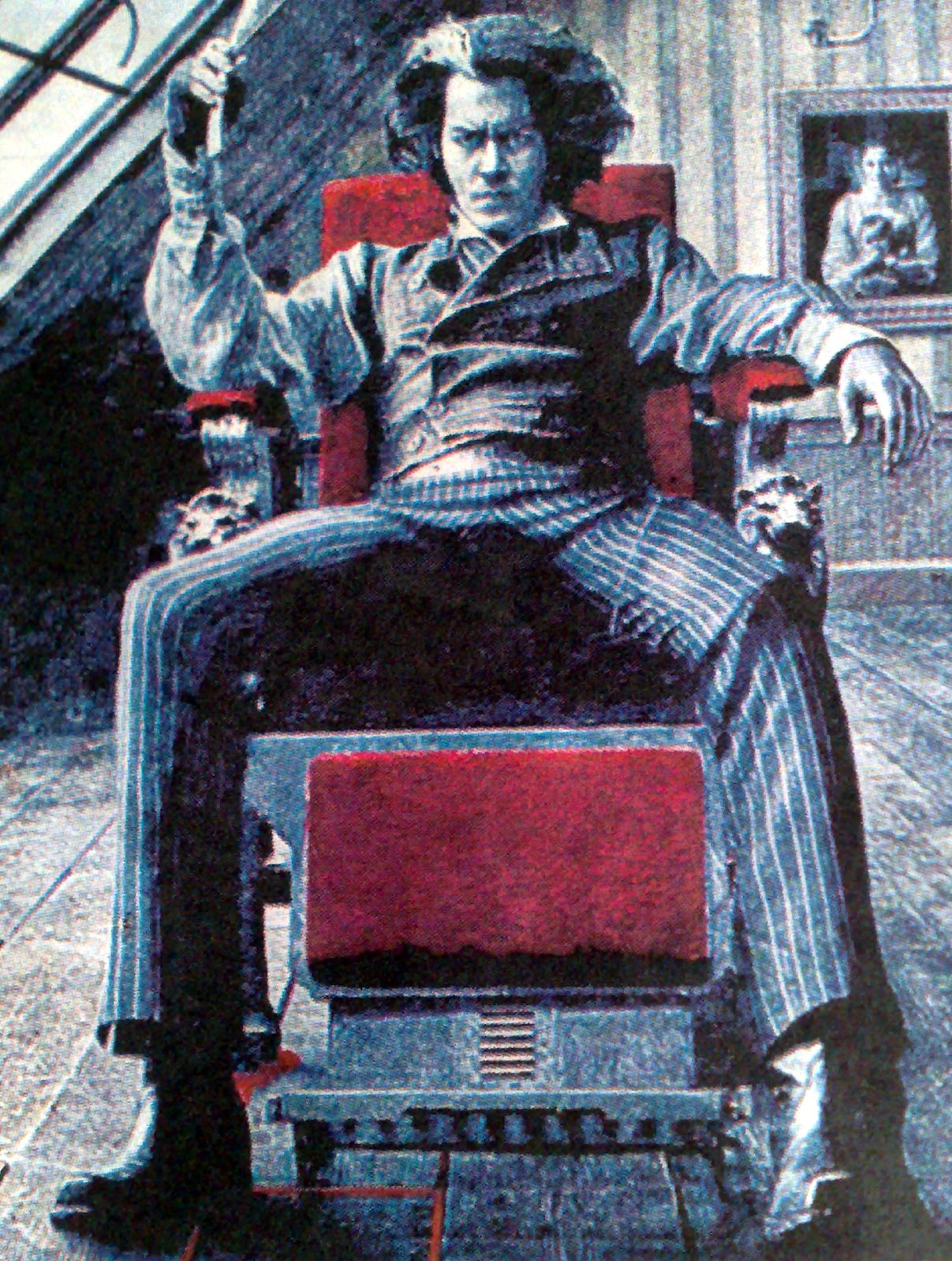
Sweeney Todd
Sweeney Todd - the legendary, but fictional demon barber with a sideline in baked goods! ☺
If you’re unfamiliar with the Sweeney Todd story, the plot can be summarized: Todd, a Fleet Street barber, was a serial killer who murdered his clients. As they sat in the barbers chair he pulled a lever and they fell backwards through a revolving trapdoor, falling to the basement below and breaking their necks (if not the Sweeney finished them off!) His victims’ corpses were then made into delicious meat pies, by his neighbour, Mrs Lovett and sold in her pie shop nearby.
The tale became a Victorian melodrama and has continued to appeal to audiences throughout the years:
· 1846 -47 Victorian penny dreadful ‘The String of Pearls’
· 1936 Sweeney Todd the Demon Barber of Fleet Street
· 1959 a ballet by English composer Sir Malcolm Arnold
· 1973 he was introduced as an antihero by English playwright Christopher Bond
· 1979 a Tony award winning Broadway Musical by Stephen Sondheim and Hugh Wheeler
· 2006 a BBC adaptation directed by David Moore and starring Ray Winston
· 2007 as a musical film Sweeney Todd directed by Tim Burton and starring Johnny Depp.
Quotes about Barbers

Michael Caine:
“In the sixties, everyone you knew became famous. My flatmate was Terence Stamp. My barber was Vidal Sassoon. David Hockney did the menu in a restaurant I went to. I didn't know anyone unknown who didn't become famous.”
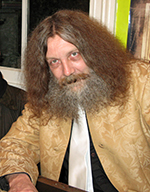
Alan Moore:
“I really can’t be bothered going to a barber. And shaving every morning that’s nightmarish. I spent my teenage years covered in tiny bits of toilet paper.”

Robbie Williams:
“I've lived in L.A. for a long time, and they say, 'If you sit in a barber's shop for long enough, you will get a haircut.' Well, if you live in Los Angeles for long enough, you're going to get some surgery.”
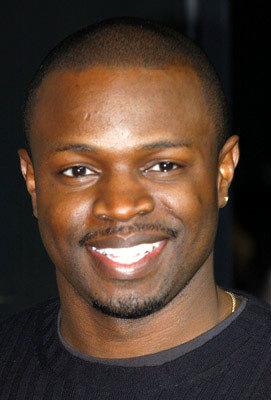
Sean Patrick Thomas:
“I did study the art of being a barber because I wanted to figure out what my routine would be. Do you start in the front or back? Top or bottom? Swivel the chair or walk around? What I did discover is there's no such thing as the perfect haircut!”

Noel Gallagher:
“When I was 16, I’d watch ‘The Godfather’, but I didn’t think right, I’m going down to the barbers and get some protection money off him.”
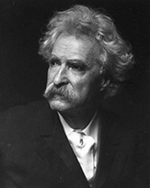
Mark Twain once wrote:
"What one experiences in a barber's shop the first time he enters one is what he always experiences in barbers' shops afterward till the end of his days.”
